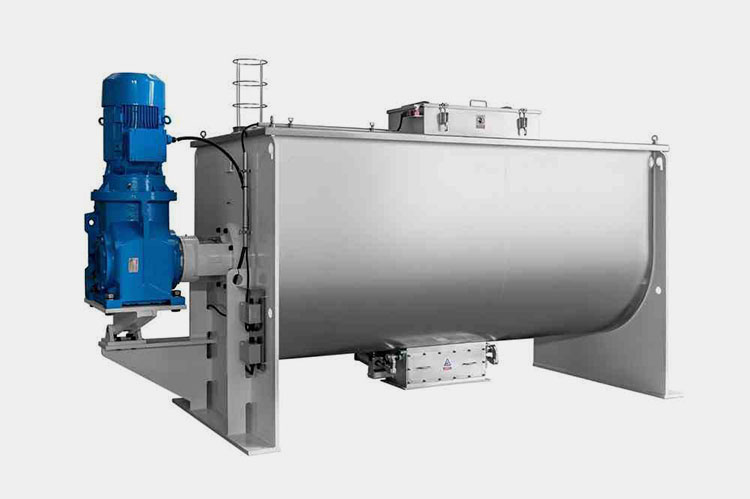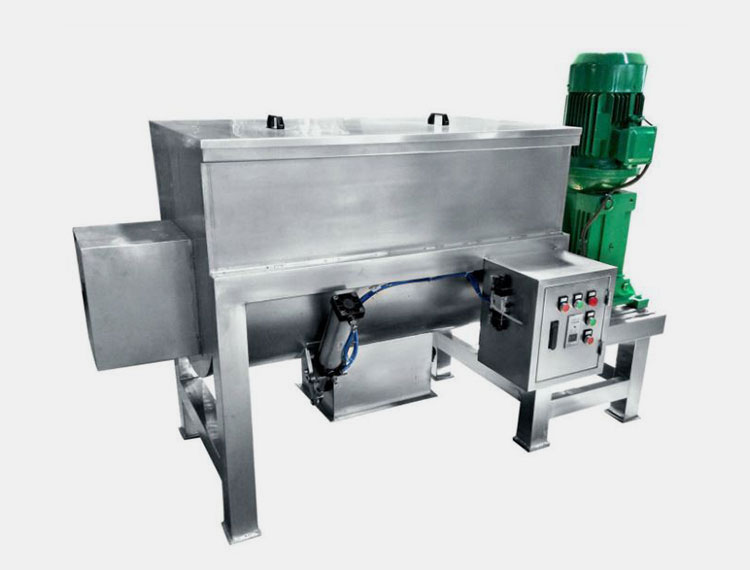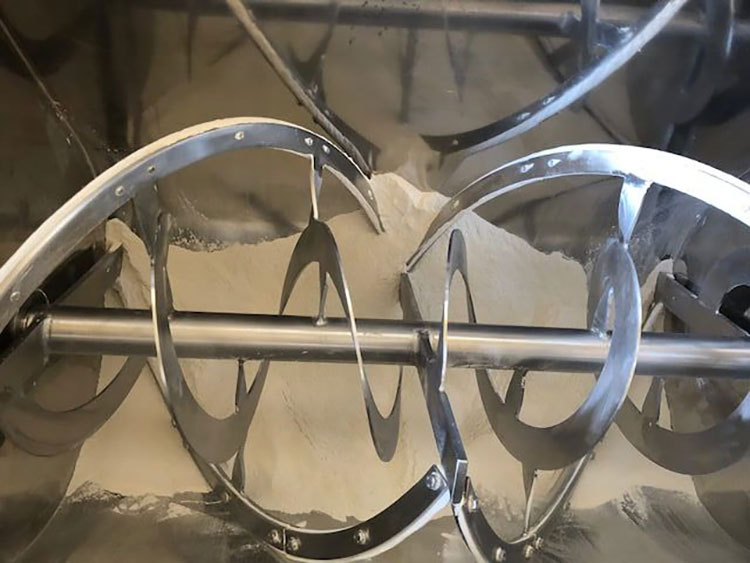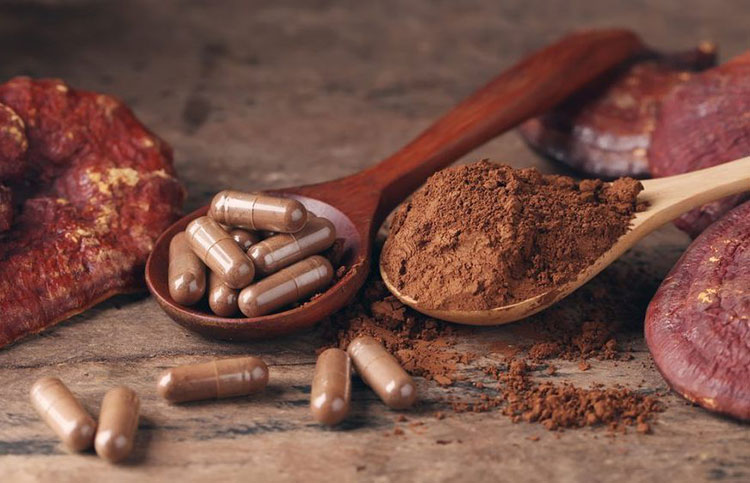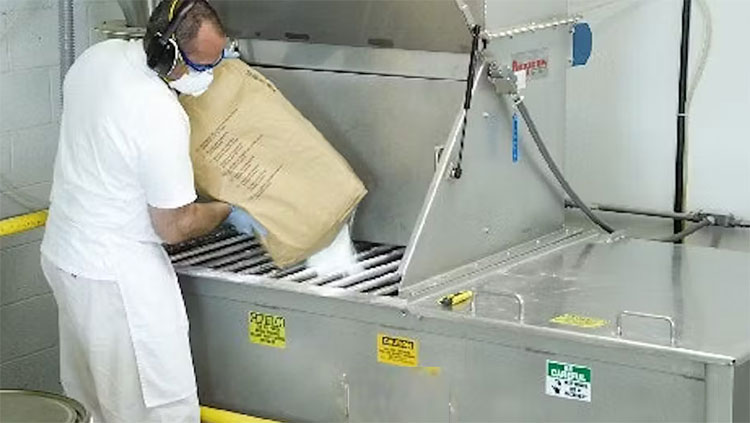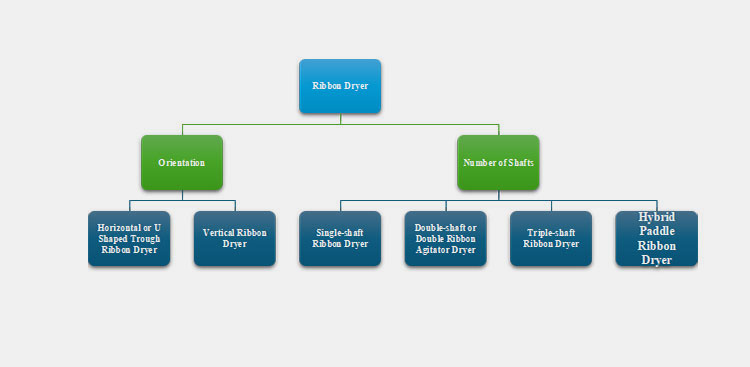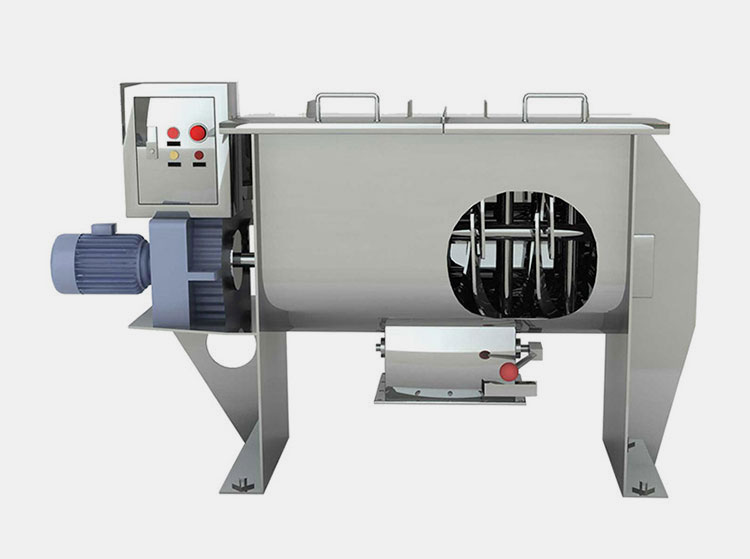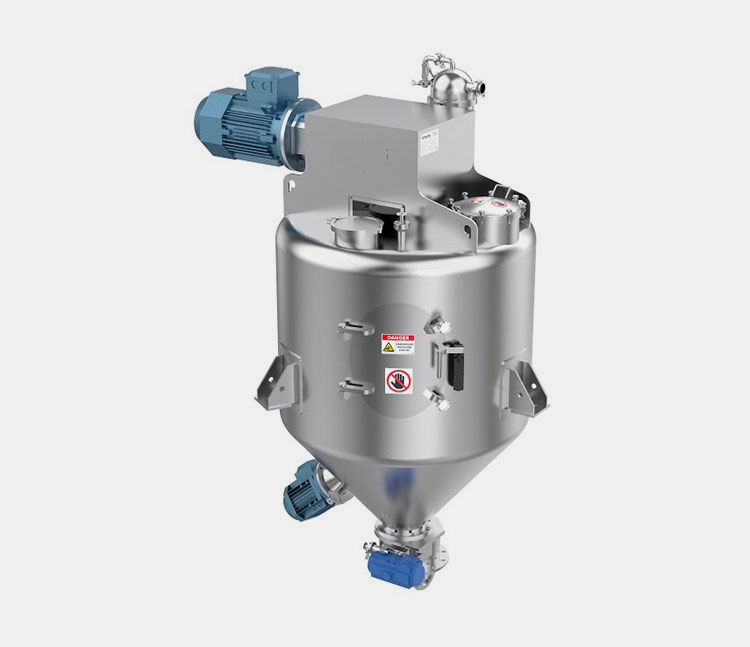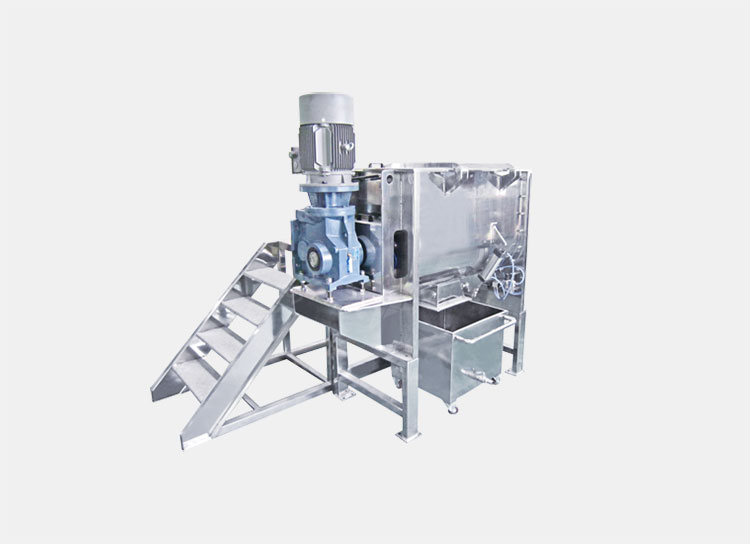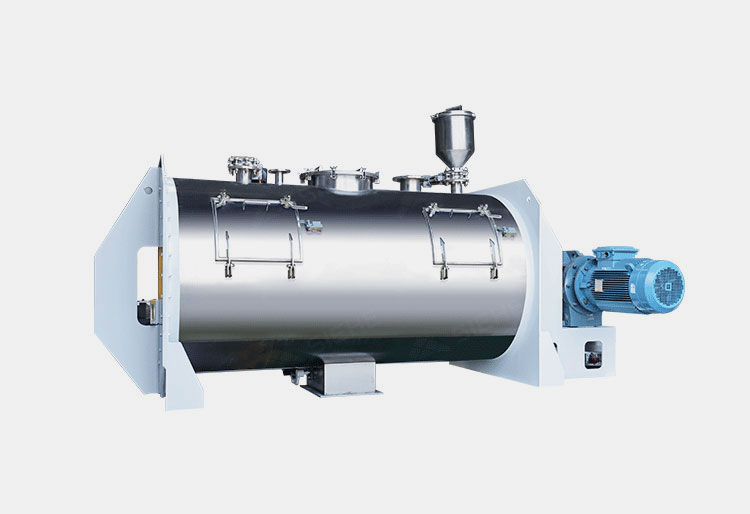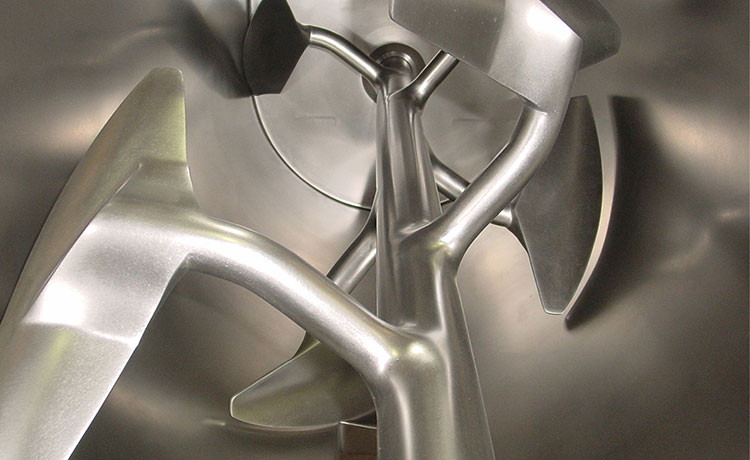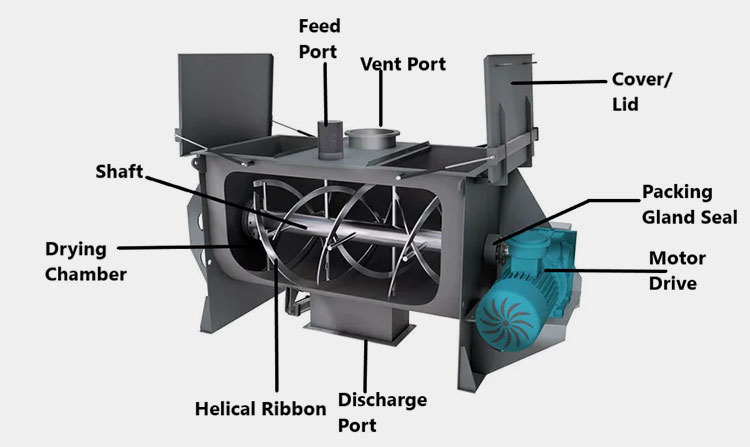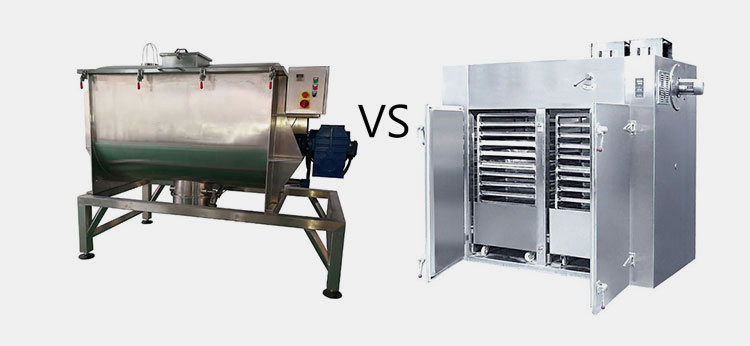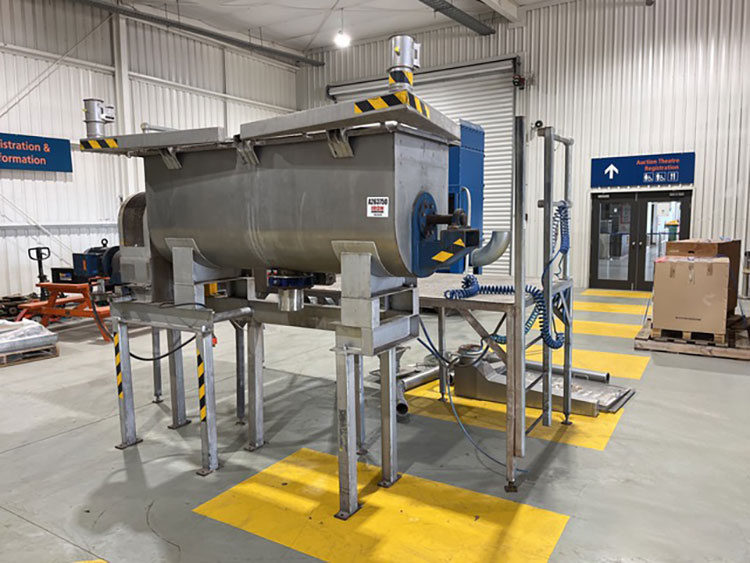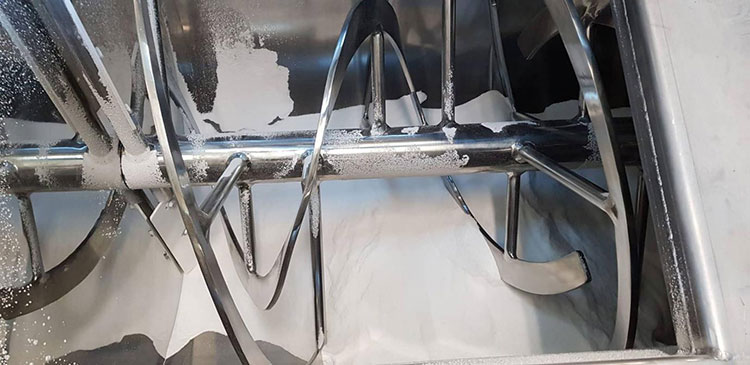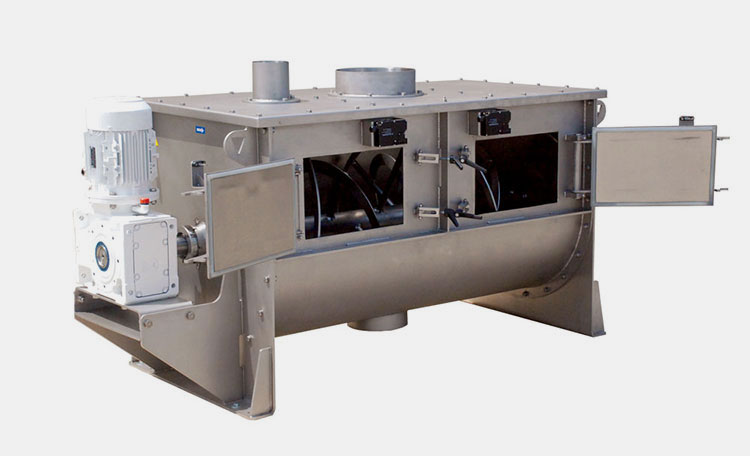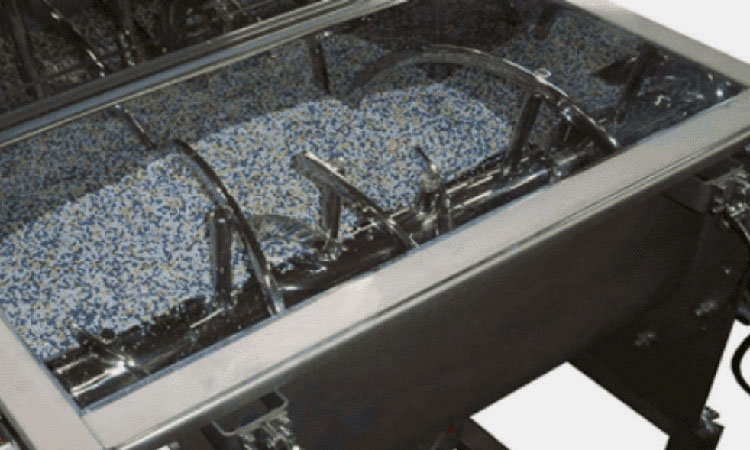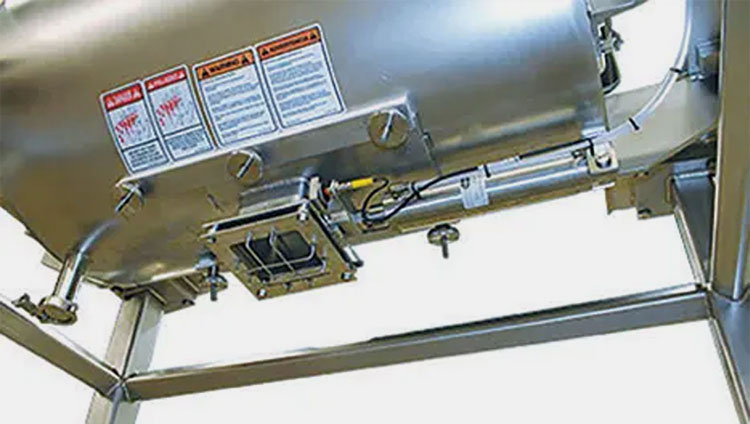Ribbon Dryer: The Complete Buying Guide In 2025
How do you dry heat-sensitive materials? Modern sciences and technology have come with advanced techniques and methods to complete such challenging tasks safely. Today, ribbon dryers serve as the most optimal drying equipment to subject materials to various drying temperatures. If you’re planning to bring this unit to your working facility; then don’t go anywhere. This informative and knowledgeable post is just designed for you.
Here you can find out about the significance, uses, working, structure, and related technical problems with easy troubleshooting, and much more. Stay with us and read the blog.
1.What is theribbon dryer?
Ribbon Dryer- Picture Courtesy: Wanda
A ribbon dryer is a highly renowned industrial equipment, employed for specialized applications of mixing and drying. Due to its effortless combination of blending and drying in one machine, it is considered an ideal tool for processing thermosensitive or oxygen-sensitive materials, such as granules, crystalline materials, low-viscosity pastes, and powders.
The ribbon dryer has a jacketed cylindrical shell with specialized helical agitators for even heat distribution and constant and gentle stirring of materials. The mixing action initiated by agitators continuously results in the moving of fresh layers of materials toward the heated walls of the shell.
2.How a ribbon dryer is significant for your business?
A ribbon dryer is a multi-functional machine, regarded as a mixing and drying powerhouse in the manufacturing sectors. It comes with a limitless list of unique benefits for your business. Let’s dig into the significance of a ribbon dryer:
Increased Efficiency and Productivity
Increased Efficiency and Productivity- Picture Courtesy: Andreotti Farmaceutica
A ribbon dryer is preferred in different manufacturing units because of its absolute best efficiency and productivity. This device is not only capable of drying large batches of materials but also has the shortest drying cycle. Moreover, by attaining blending and drying in a single device, the ribbon dryer streamlines the manufacturing process, which saves both resources and time.
Durable and Hygienic Design
Durable and Hygienic Design- Picture Courtesy: Scott Equipment Company
This machine is manufactured with durable, long-lasting, and, superior-quality stainless steel and is available in all types of sizes- from laboratory to industrial scale. The drives, motors, and bearings are fitted outside the drying vessel and hence are not exposed to high temperatures as the feed is being dried. This increases the convenience of lubricating, maintaining, and drying machines.
Gentle Drying
Gentle Drying- Picture Courtesy: Ecco Verde
The agitators in the ribbon dryer gently distribute the materials inside the drying vessel and thus the feed is not subjected to damaging frictional forces or other deteriorating conditions. Therefore, industries and productions use this drying machine for processing materials that cannot tolerate excessive heat or mechanical stress. It is necessary for handling fragile powders, active drug components, and fabrics.
Uniform Blending and Drying
Uniform Blending and Drying- Picture Courtesy: IVC Journal
The ribbon dryer is designed with sturdy helical ribbons that force feed to and fro for mixing. The ribbons present at the outer edge move feed towards the center of the drying chamber from the outer edges, while the inner ribbons displace the feed from the center towards the outer edge, resulting in better homogeneity and drying.
Increased Energy Efficiency
Increased Energy Efficiency- Picture Courtesy: Chemical Processing
A ribbon dryer is utilized for direct as well as indirect heating, leading to efficient use of energy depending upon the feed and drying needs. Indirect heating is ideal for efficiently drying the material, lowering heat loss, and conserving energy utility. This feature is integral in productions where energy expenses consume a huge chunk of utility bills.
Decreased Product Wastage
Decreased Product Wastage- Picture Courtesy: PacMoore
Since the ribbon dryer upholds a controlled drying environment in the drying chamber, therefore; there is less likelihood of overheating or degrading the product. This causes minimal wastage of starting material in turn leading to higher throughput. This benefit is especially pivotal in settings where raw feed or active ingredients are expensive.
3.Where is a ribbon dryer mostly employed?
There has been a significant revolution in drying technology, especially where a ribbon dryer is concerned. Due to fast, consistent, and, gently drying approaches, this machine occupies a special place in wide-ranging industries. We are discussing different industrial sectors where a ribbon dryer has found its use for your information:
Pharmaceutical Industry
Capsules and Powder- Picture Courtesy: Biopelle
The pharmaceutical industry often processes delicate and fragile materials, requiring extremely gentle processing devices, one of which is a ribbon dryer. It gradually dries various sensitive pharmaceutical ingredients and other compounds without causing a loss of their structural integrity. It is typically used after wet granulation or in other mixing processes to produce high-quality granules and powders.
Food Industry
Food Industry- Picture Courtesy: The Lantern
In the food industry, different types of food materials like pastes, soups, and doughs are consistently mixed and require efficient drying. Hence, a ribbon dryer is ideal for blending and drying applications in the food industry. It is involved in the drying of spices, herbs, flavoring agents, juice mixes, coffee, and tea mixtures.
Chemical Industry
Paint Pigments- Picture Courtesy: Hockmeyer
The function of a ribbon dryer in the chemical industry is to uniformly reduce the moisture content of different chemicals, for instance, resins, polymers, pigments, and dyes for optimized processing or packaging. It also has a role in the successful and thorough drying of various chemicals, such as catalysts and metals involved in different chemical reactions.
Cosmetic Industry
Cosmetics
A wide range of delicate powders and pastes are frequently processed in the cosmetic industry to manufacture high-quality beauty clays, face masks, talcum powders, foundations, blushes, and other shades. So, a ribbon blender is an appropriate device to smoothly mix and dry sensitive powders and granules without damaging their properties and forms.
Agriculture Industry
Agriculture Fertilizer
Different types of organic and inorganic fertilizers, feeds, additives, and other agricultural compounds are rich in moisture and must be properly dried for effective granulation and storage. Therefore, a ribbon dryer is one of the highly utilized drying machines involved in moisture control in the agriculture industry.
Textile Industry
Textile Industry
A ribbon dryer has also found its way into the textile industry for meticulous and uniform drying of various powdered dyes, treatments, and fabric additives. This machine is typically preferred in the precise processing of fabrics because it removes every moisture particle from the textile powders, leaving them fully dried and undamaged.
4.What are the available types of ribbon dryers?
A ribbon dryer is categorized into various groups depending on its structure and orientation. Let’s go into details of the classification of a ribbon dryer:
According to Orientation
Two kinds are available in the market based on the orientation of a ribbon dryer:
Horizontal or U-Shaped Trough Ribbon Dryer
Horizontal Ribbon Dryer
This ribbon dryer is horizontally oriented with a horizontally located shaft. It has a cylindrical or U-shaped trough design and is appropriate for materials that are distributed across a wide plane for consistent drying. In a horizontal ribbon dryer, a spiral flow of feed is formed because of the rotation of ribbon blades. The feed is transferred in lateral and radial directions, resulting in countercurrent mixing action.
It is appropriate for free-flowing powders and semi-dry pastes. It offers a large surface area for heat distribution, enhancing drying rates.
Vertical Ribbon Dryer
Vertical Ribbon Dryer- Picture Courtesy: PerMix
This machine is vertically configured with a shaft fixed vertically within a tall conical screw-shaped chamber. This makes the arrangement of the vertical ribbon dryer more compact, reducing its floor print. Materials are fluidized in a vertical upward direction, resembling a vortex, and with gravity, these materials are dropped down. So, a vertical ribbon dryer is ideal for heavier viscous materials that require longer retention time.
It has less surface area for drying and the heat transference happens by the contact with walls of the drying chamber, thus having slower drying.
According to the Number of Shafts
There are the following subclasses of a ribbon dryer based on the number of shafts:
Single-shaft Ribbon Dryer
Single-shaft Ribbon Dryer- Picture Courtesy: SIEHE Group
In this type of ribbon dryer, only one rotating shaft equipped with ribbon helical blades is present. The ribbon-like structures rotate along the length of a drying chamber and move the material only in one direction, providing a moderate level of agitation and drying.
It is generally utilized for small and simpler drying tasks because it does not offer the intense stirring required for breaking hard lumps and agglomerates. It has straightforward construction and is a cost-cutting choice for small and medium-scale productions.
Double-Shaft or Double Ribbon Agitator Dryer
Double-shaft Ribbon Dryer- Picture Courtesy: SIEHE Group
The core component in this kind of ribbon dryer consists of two parallel ribbon blades, rotating in opposing directions, thereby resulting in strong and intense intermingling and drying action.
These double shafts are well-known for their improved mixing throughput, causing a complicated pattern of lifting, folding, and, agitating. This leads to better exposure of feed to drying vessels and improves consistency in drying rates.
It can easily process thick, sticky, and viscous materials as compared to its single-shaft counterpart. It is generally involved in bulk volume processing and faster drying rates.
Triple-shaft Ribbon Dryer
Triple-shaft Ribbon Dryer- Picture Courtesy: Phoenix Equipment
The central part of the triple-shaft ribbon dryer has three parallel shafts (one inner, one in the center, and one at the outer edge), offering more intricate and intense blending and drying action. These shafts have their rotational directions, contributing to increased contact between the heating source and starting material.
There is no dead zone in the triple-shaft ribbon dryer, thus it is highly suitable for difficult-to-handle, extremely dense, and viscous slurries and pastes. However, it is a costly device that consumes more energy for its operations.
Hybrid Paddle Ribbon Dryer
Hybrid Paddle Ribbon Dryer- Picture Courtesy: Marion Solution
It is composed of the combined action of the agitator and agitating paddles simultaneously. It creates the reversal mixing and drying effects there materials form an even movement and subtle drying.
Here, you must know how to utilize the correct selection when it comes to addressing the agitator and knowing the drying time. Hence it assures the optimized and correct discharging of materials.
5.What is the structural framework of the ribbon dryer?
A ribbon dryer is comprised of a jacketed shell and uniquely engineered ribbon agitators; used for dispersing feed and vaporization moisture. Several important components work in conjunction to optimize drying time and heat distribution. Some of the fundamental parts of a ribbon dryer are detailed below:
Parts of a Ribbon Dryer
| Feed Port | The feed for drying is loaded from the feed port found at the upper portion of the drying chamber. This port is manually controlled or attached to the automatic conveyor for consistent feed dispensing. |
| Shaft | It is a rotating, horizontal, or vertical rod fixed in the middle of the drying chamber. It is manufactured using strong and temperature-resistant to increase its lifespan. This part rotates with the help of power provided by the motor and gearbox. |
| Drying Chamber | It is also called a shell or barrel and is created using durable and corrosion-resistant materials, for instance, stainless steel, carbon steel, etc. to be impervious to increased temperatures, pressure, and, chemicals. In most of the cases, it is horizontal and cylindrical. In this chamber, rotating shafts and helical ribbons are mounted to dry feeds. |
| Helical Ribbon | Helical or ribbon-like blades are attached to the shaft, which usually resembles a double helix. Their function is to disperse the feed along the entire space of the drying chamber. They offer continuous mixing and force materials in opposing directions- towards the edges and middle for thorough mixing. |
| Discharge Port | It is usually located at the bottom part of the drying vessel for easy discharge of dried materials. It is offered with a mechanical or automatic valve or gate to regulate the release of feed. |
| Motor/Drive | Drive assembly consists of a motor and gearbox and is essential in providing mechanical power to the shaft for its rotation. The motor is present at the end of the drying barrel. The drive assembly is responsible for controlling the speed and torque of the shaft. |
| Packing Gland Seal | It is a mechanical seal, mounted on the ribbon dryer to ensure there would be no leakage of liquids from the machine. It is present at the conjunction of shaft and covering. It is designed to act as a barrier to prevent the escape of feed when the shaft is rotating. |
| Cover/Lid | The cover or lid is a safety feature that airtightly seals the drying chamber to keep the inner feed in isolation from external agents. It is known for upholding consistent drying conditions inside the chamber. |
| Vent Port | It is also termed an exhaust system and its job is to unload vapors from the drying chamber. This vent port is equipped with different types of airflow controls, dampers, and other filters to regulate airflow. |
6.What is the difference between a ribbon dryer and a tray dryer?
A ribbon dryer and a tray dryer are both pharmaceutical dryers but the difference lies in their design, drying mechanism, and drying rates. Here are a few fundamental differences between these two machines:
| Ribbon Dryer | Tray Dryer |
| It is comprised of a horizontal or vertical drying vessel with rotating shafts and helical ribbons. | It is featured with numerous trays stacked on top of each other in a drying vessel. |
| The drying is based on the conductive and connective principle in a ribbon dryer. | Its drying mechanism is based on the convective principle. |
| It is appropriate for powders, granules, pastes, and viscous feed. | It is ideal for drying herbs, fruits, and, pharmaceutical products. |
| It performs both mixing and drying functions. | It only dries the feed. |
| It has high drying potential because of the mixing actions of ribbon blades that consistently agitate materials, leading to rapid drying rates. | The drying takes more time because air circulates in the dryer while the material is static. |
7.What are the cleaning and maintenance principles of a ribbon dryer?
Cleaning and Maintenance of a Ribbon Dryer- Picture Courtesy: IronPlanet
The cleaning and maintenance of a ribbon dryer is strongly correlated with outclass performance, product quality, and durability of the machine. So, let’s learn about key points of cleaning and maintenance of a ribbon dryer:
| Clean-in-Place System | Many industries have set up CIP systems to efficiently clean the ribbon dryer without going for lengthy and exhausting disassembly. It circulates various types of cleaning agents, for instance, detergents, disinfectants, bleach, or water to completely clean the ribbon dryer. |
| Regular and Deep Cleaning | It is advised to clean the machine after every processing batch or after the processing cycle to get rid of material accumulation or cross-contamination. Moreover, deep cleaning of a ribbon dryer should be performed every week to remove adhesives, oils, or powders. You must remove each part and thoroughly rinse them with water jets, or chemical agents. It is essential to clean and scrub important components, for example, ribbon blades, shafts, chamber walls, and discharge ports. |
| Inspection | Frequently check important parts for damage, rusting, corrosion, and wear and tear. Inspect ambiguous vibrations, noises, or feed leaks from the machine. Proper heat transfer must be ensured by inspecting the functioning of the heating and ventilation system. Predictive maintenance is performed using various thermocouples and IoT sensors to proactively repair components. |
| Lubrication | Bearing, shafts, and seals should be routinely lubricated with the right kind of lubricant, for instance, grease or oil to avert overheating and frequent wear and tear. |
| Alignment | If ribbons or shafts are not properly aligned, it could result in poor drying or a high rate of component damage. Therefore, inspect and fix the issues in alignment of rotating components. |
| Calibration | It is important to calibrate temperature, pressure, airflow, and moisture sensors on a routine basis to ensure accurate management of drying efficiency and performance. |
8.What are the common problems and solutions of a ribbon dryer?
The problems in a ribbon dryer are commonly associated with mechanical working, processing, and material inconsistencies. But with proper maintenance, supervision, and operator training, these problems are easily rectified. So, let’s discuss common problems and solutions for a ribbon dryer:
Nonuniformities in Drying
Nonuniformities in Drying- Picture Courtesy: GIMAT Srl
After drying, it is discovered that some parts of the feed are over-dried while in others, a significant amount of moisture is present. This results in inconsistencies in drying.
Causes
There are a large number of reasons for this problem, such as poor mixing because of old, damaged, or misaligned ribbon blades. There is inaccurate heating or inadequate airflow inside the drying vessel. The materials are loaded wrongly in the dryer or the shaft has incorrect rotational speed.
Solutions
The solutions to this problem are routine examination and maintenance of the ribbon blades to identify and repair their wear and tear. Also, correct leveling and alignment of the blades. Secondly, check the working of the heater and ventilation system to ascertain the correct heat distribution in the drying chamber. You should fix the airflow in the chamber to boost heat absorbance. Alter the rotational speed and feed rate to attain equivalence between material load and drying.
High Energy Use
High Energy Use- Picture Courtesy: MC2 srl
Sometimes, the ribbon dryer uses more energy than calculated, resulting in more operational expenses.
Causes
The reasons for this issue are: loading of ribbon dryer well above the working capacity. There is inadequate insulation or a leak in a ribbon dryer, promoting heat wastage. Also, you are operating the device at an excessive temperature than required.
Solutions
To solve this issue, you must not overload the ribbon dryer and ensure its loading capacity is under the working limit. Properly and regularly examine the machine to identify the leaks in the machine cover, gaskets, and seals. Fix these perforations to increase thermal throughput. Recalculate the drying temperature and maintain this temperature when drying.
Clogging of Material
Clogging of Material- Picture Courtesy: WAMGROUP
The material accumulates inside the dryer, particularly around edges, walls, blades, or at the periphery of the discharge port. This results in poor drying and uneven mixing.
Causes
It is due to sticky and extremely viscous residues that incline to stick on surfaces. The design of the ribbon blade also leads to inadequate mixing or agitation.
Solution
To address this issue, the ribbon blades must be compatible with the type of material being dried. Secondly, use specialized coating agents or non-stick components to prevent the sticking of viscous substances. It is suggested to increase the speed of the shaft to improve material fluidity. Also, maintain a regular cleaning schedule to decrease material accumulation.
Leakage from the Seals
Leakage from the Seals- Picture Courtesy: ROSS Mixers
In certain cases, different kinds of substances, such as air, vapor, or feed leak from seals or covers, minimizing drying throughput.
Causes
This issue is because of degraded packing seals and poorly secured covering of a ribbon dryer.
Solutions
It is advised to frequently examine and replace the worn-out packing gland seal to decrease the frequency of leakage. Moreover, properly secure the cover and lid to maintain airtight sealing.
Slow Discharge
Slow Discharge- Picture Courtesy: CMT Process Solutions
The products are improperly unloaded from the outlet, leading to slow processing capacity or machine halting.
Causes
There are various reasons for this issue like material accumulation near the discharge port. Furthermore, inefficient ribbon blade configuration also contributes to poor product fluidity.
Solutions
To solve this problem, one must routinely clean the entire machine, especially around the discharge vent. Alter the ribbon blade design to enhance material fluidity from the discharge port.
9.What is the prospect of a ribbon dryer?
Future Prospects of Ribbon Dryer
The future progressions are closely associated with technological evolutions, changing industrial requirements, and, environmental deliberations. As industries are in the process of continuous revolution, so demand for efficient ribbon dryers is on the steady rise.
It is stipulated that with stricter environmental regulations, industries are committed to driving down their energy consumption, hence, in the future, ribbon dryers will have improved heat distribution designs like optimized insulation, and enhanced blade arrangement to cut down energy use and increase drying rate.
Furthermore, efforts have been made to increase automation of the ribbon dryer with the integration of IoT (Internet of Things), and smart sensors to transform the efficiency of drying procedures and improve real-time supervision, predictive maintenance, and timely setting of operational parameters. The ribbon dryer of the future will have intelligent control systems to provide ease to operators in adjusting drying parameters.
This automation will contribute to better regulation of temperature, airflow, and drying speed, leading to improvement in product quality while lowering interruption and maintenance expenses.
Conclusion
In conclusion, a ribbon dryer is the perfect choice of drying device for various manufacturing sectors to optimize drying performance, time, and energy efficiency. It has multi-functional potential and versatility justifying the drying requirements and moisture control demands in different industries. It is involved in better heat transfer, leading to a short drying cycle and minimizing energy bills. The ribbon dryer boosts the consistencies in drying rates, thus resulting in more return profits for businesses. If you want a customized machine well-matched to the capabilities of your production, then you are encouraged to contact Allpack for the best guidance and support.
Don't forget to share this post!
CONTACT US
Tell us your raw material and project budget to get quotations within 24 hours.
WhatsApp Us: +86 181 7101 8586
The Buyer's Guide
